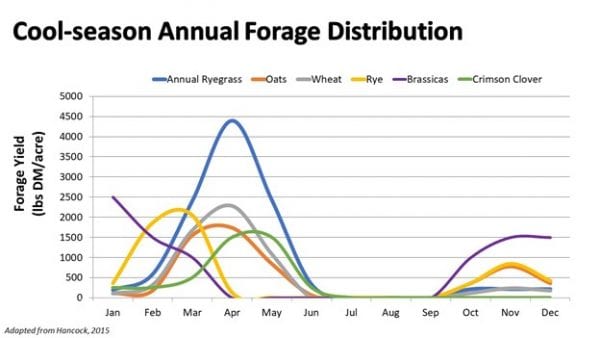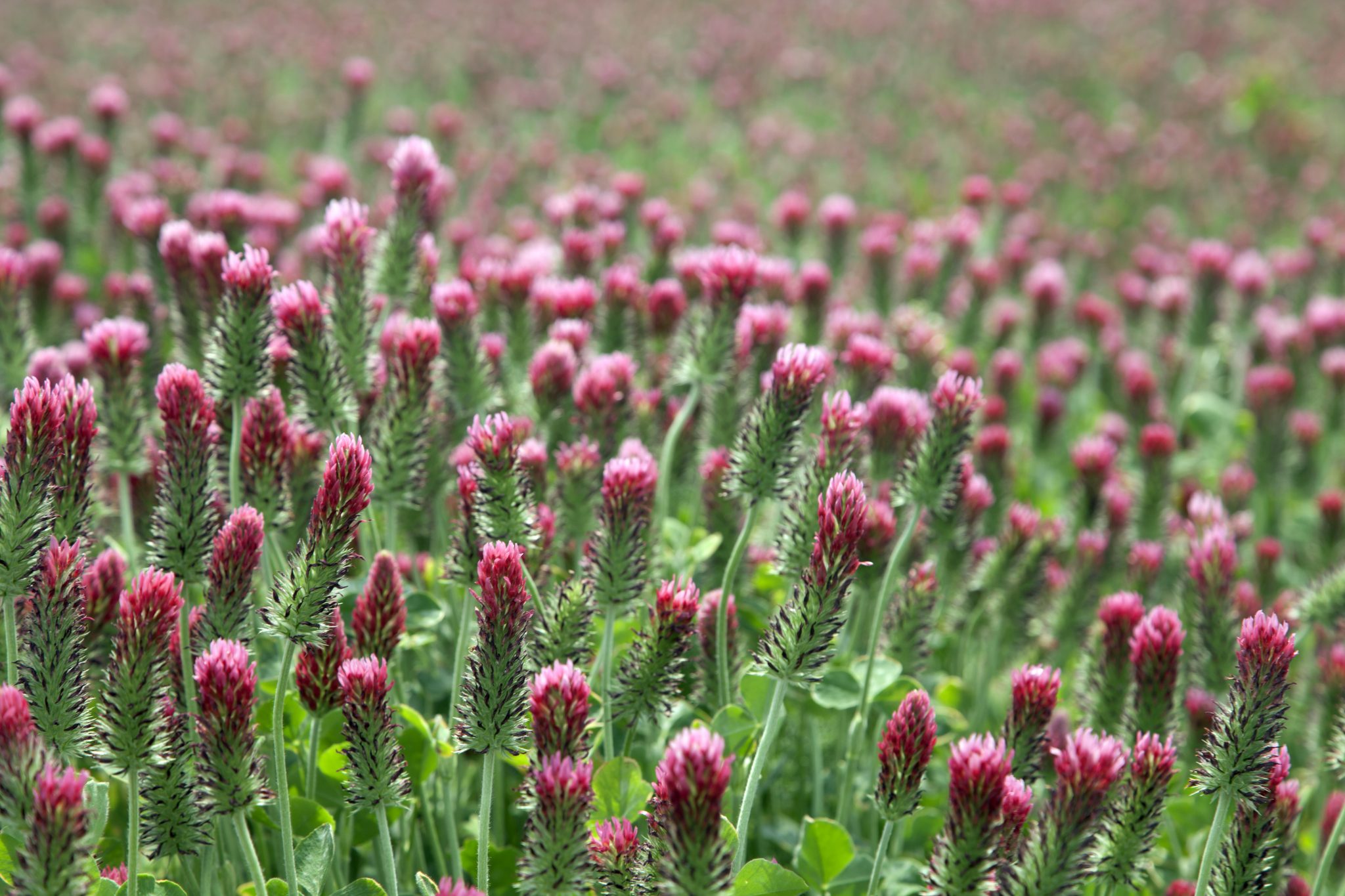Farming

Cool-season annual mixtures are highly nutritious and are a great forage option during the fall and winter, as well as into the spring. Mixtures vary but can include small grains (e.g., cereal rye, wheat, oat), annual ryegrass, brassicas (e.g., turnips, radish, kale), and annual legumes (e.g. crimson clover, arrowleaf clover, and hairy vetch). Alone, these forages are nutritious [52 to 75 percent total digestible nutrients (TDN) and eight to 25 percent crude protein (CP); see Table 1]. However, when grazed in a mixture, they generally have a more uniform forage yield throughout the grazing season and have complimentary forage quality profiles.
Table 1. Typical Forage Quality of Various Cool-season Annuals
| Cool-season Annual | Total Digestible Nutrients (%) | Crude Protein (%) |
|---|---|---|
| Wheat | 52 – 70 | 8 – 14 |
| Oat | 55 – 70 | 8 – 14 |
| Annual Ryegrass | 56 – 74 | 10 – 20 |
| Brassicas | 65 – 70 | 20 – 25 |
| Crimson Clover | 57 – 75 | 14 – 16 |
| Arrowleaf Clover | 56 – 75 | 14 – 17 |
Research in Arkansas and Alabama has shown that mixing small grains with annual ryegrass extends the grazing season by 20 to 30 days when compared to either annual ryegrass or a small grain alone. Typically, these systems are designed to maximize forage yield and quality to support an intensive stocker or replacement heifer program. However, many pasture-based beef cattle producers operate cow-calf operations. The forage quality of cool-season annual mixtures exceeds the nutrient requirements of both pregnant, mature cows and lactating mature cows. This is a result of the nutrient requirements of mature cows being at least 25 percent less than those of their growing counterparts. Free access to cool-season annual mixtures can lead to mature cows gaining too much condition and being overweight. This leads to reduced conception rates and possible calving difficulty.
Limiting the animal’s access to these pastures on either a daily or a weekly basis will limit the amount of forage the animals can consume and prevent them from gaining too much condition during the winter months. Limit grazing can take on a variety of different forms, but the premise stays the same, limit the amount of grazing time animals have access to high quality pasture and feed lower quality feedstuffs during the other times. The two main ways to do this are 1) graze cool-season annual pasture for only four to five hours every two to three days or 2) allow animals access to cool-season annual pasture for 36 to 48 hours per week.
In either scenario animals should be put on stockpiled warm-season grasses, or in a dry lot with hay when they are not allowed into the cool-season annual pasture. Regardless of the amount of time spent in the limit grazed pasture, animals should always have free access to a fresh, clean water source. Research in Arkansas has shown that cow-calf pairs grazing a wheat/rye/annual ryegrass pasture for two days per week produced the same cow, calf, and rebreeding performance as cows fed unlimited hay plus a supplement, but limit-grazing reduced hay consumption by 30 percent, reducing the winter-feeding costs.

Figure 1. Cool-season Annual Forage Distribution in Alabama
For producers feeding replacement heifers or stockers, cool-season annual mixtures are excellent choices to feed during the winter and spring. Research in Alabama has consistently seen three to four pounds average daily gain (ADG) on steers grazing wheat, annual ryegrass, and crimson clover mixtures. In order to maintain grazing all season, consider the growth period of each variety and species. Figure 1 shows the general growth habit for cool-season annual forages typically used in Alabama. By strategically selecting each species, there can easily be grazable forage available from January through May. The cost of gain is also considerably less than if a producer were feeding hay and/or supplement during this period.

